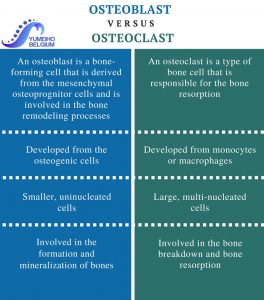Osteoporosis and how Yumeiho® can help
Definition
Osteoporosis is a progressive metabolic bone disease that decreases bone mineral density (bone mass per unit volume) thus damaging bone structure. Weakness of the skeletal bone leads to the appearance of fractures with minimal trauma, especially to the thoracic and lumbar spine, wrist and hip joint. Acute or chronic back pain occurs frequently. The diagnosis is made by osteo-densitometry. Prevention and treatment involve the intake of calcium and vitamin D, exercise that increases bone density and muscle strength, special massage techniques that relax the muscles, thus reducing the patient’s risk of falling and drug therapy to maintain bone mass and stimulate new bone formation.

Pathophysiology and classification
Normally, bone synthesis and reabsorption are closely related. The activity of osteoblasts (cells that synthesize the organic matrix of bone and mineralize it) and osteoclasts (cells that perform bone resorption or remodeling) is regulated by parathyroid hormone (PTH), calcitonin, estrogen , vitamin D, cytokines (interleukin 1, tumor necrosis factor alpha, granulocyte-macrophage colony stimulating factor, interleukin 6) and other local factors such as prostaglandins.
The positive peak of bone mineral density in both sexes is around the age of 25 years. African Americans have a higher bone mineral density than Caucasians and Asians, while Hispanics have intermediate values. Men have higher bone mineral density than women. The plateau of bone mineral density lasts about 10 years, during which time the rate of bone formation is approximately equal to that of bone resorption. After this period, the bone mineral density decreases by about 0.3-0.5% per year. Starting with menopause, the decrease in bone density accelerates in women by about 3-5% per year for 5-7 years.

Signs and symptoms
The vast majority of chronic pain typical of osteoporosis is due to fractures, which can occur with minor trauma or in the absence of determinants. Patients may be asymptomatic year after year until fractures begin to appear. Eventually, patients begin to experience pain in the bones and muscles, especially in the back. Vertebral compression fractures are common, especially in high-weight vertebrae (starting with T6). The pain has an acute onset, usually does not radiate, is aggravated by weight support on the fractured side, may produce local tenderness and begin to subside after about a week. However, it may remain a residual pain for several months or in the long term.
Multiple compression fractures at the level of the thoracic spine can cause thoracic kyphosis, with exaggerated cervical lordosis (hump). Increased stress on the muscles and spinal ligaments can cause chronic, persistent pain in the lower back. Fractures may also have other locations: frequently in the hip and wrist, especially due to falls.
Treatment:
Back pain due to the compression of vertebral fractures should be treated orthopedically, with analgesics, and, when muscle spasm is significant, with the application of heat and massage .
The condition will worsen with poor posture. Back pain and core strength can be improved with the help of specific massage procedures, in turn helping with maintaining a good posture.
In the management and treatment of Osteoporosis, Yumeiho® Therapy has been shown to be effective. It assists in pain management strategies, improves posture and balance, and strengthens the muscles.
To improve overall stability and strength, the Yumeiho® therapist will design an individualized and appropriate treatment, based on an evaluation of muscle strength, fracture risk, level of physical activity, range of motion, gait, fitness, and balance.

